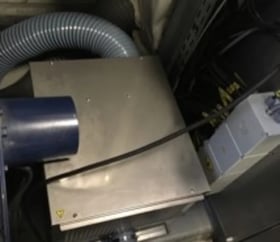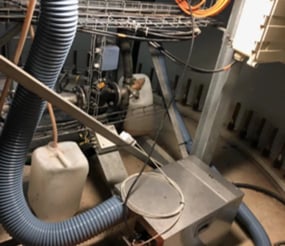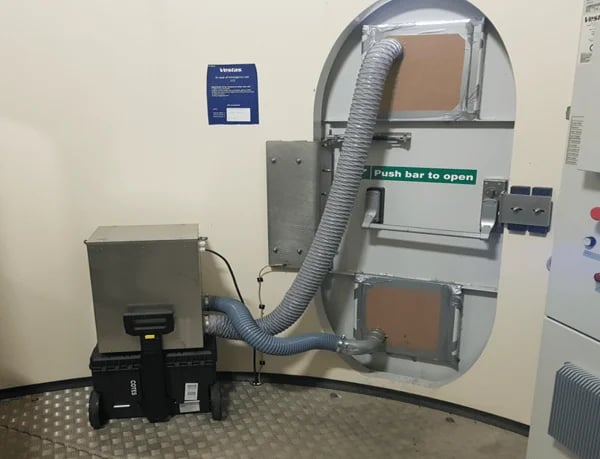Prevention is better than cure, which is why it's best to have the right dry-air strategy for your wind turbine from the very beginning - as soon as the wind turbines leave the manufacturing site. But what if your wind turbines never had the right dry-air strategy from the beginning, and now you have issues with mould, corrosion, and electrical faults? Don't worry, the problem can be solved with a relatively small upgrade/retrofit.
Why you need dry air inside wind turbines
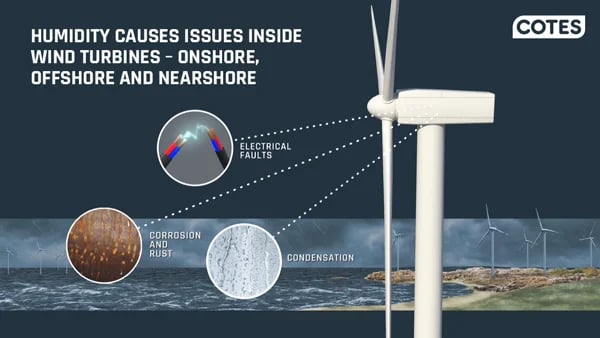
Wind turbines are exposed to the elements 24/7, 365 days a year, onshore, nearshore and offshore. Wind turbines are designed for the conditions they are meant to operate in and therefore have different corrosion and climate classes to protect them from the onslaught of humidity. However, corrosion protection is only half the story.
Almost all offshore turbines have dehumidifiers installed as a part of the integrated design as OEMs and asset owners are fully aware of humidity issues out on the sea. Cotes has over 85% market share and works closely with all major OEMs on offshore wind turbines.
For onshore wind turbines, dehumidifiers are not (yet) standard, as many onshore wind turbines are classed for "dry onshore" conditions. In reality, however, they are exposed to humidity and often the same salty conditions as offshore, especially if they are located less than 20 kilometres from the coast.
Onshore dry-air strategy
If dehumidifiers are part of the original design, as they are with offshore turbines, then the standard dry-air strategy is to keep the entire tower and nacelle dry. However, this dry-air strategy is not always possible as some onshore turbine design structures rely on an open "natural" ventilation strategy, allowing a lot of damp air inside the tower and nacelle. In such cases, dry-air strategy will be to focus on keeping certain vulnerable areas, such as cabinets or components, dry.
Onshore retrofit of Cotes dehumidifiers in a European wind farmDue to a high failure rate of the transformers inside their wind turbines, Cotes was contacted by one of our European clients. A root course analysis conculded that high humidity after grid outage caused the transformers to fail. The solution Working together with the client, a suitable place for the dehumidifier was found in the nacelle. The kit consisting of hoses, spigots and assembly parts was designed. The dehumidifiers were redesigned to work with 110V, which was available in the nacelle. A hygrostat mounted in the transformer room controls the operation of the dehumidifier. The client did a test installation and the solution was verified. After verification, Cotes supplied 80+ kits that the client could install themself for the entire wind farm. Return on Investment Payback time: less than one year. Read more on ROI here. |
|
|
Installation The installation time was approximately 2-3 hours per turbine. Where there are no existing ventilation holes in the tower wall, holes within the door flange can be used or made to have outlet (and sometimes inlet) air. Here is an example of a test setup:
|
|
With an effective and reliable dry-air solution (adsorption dehumidifier) from Cotes, you can constantly reduce relative humidity (RH%) throughout the wind turbine's lifetime. As a wind farm owner, this means fewer unscheduled maintenance and downtime costs associated with electrical faults, mould removal and component failures (due to corrosion).
Where to place the dehumidifier inside the wind turbine
Depending on what you are trying to protect, dehumidifiers are typically installed here inside a turbine in the following locations:
- Down tower
- Up tower
- Nacelle
- Hub
Some dehumidifiers are used to protect entire areas, and others are required to focus just on key components that are most vulnerable to humidity issues. It all depends on the specific problem that needs to be solved and the turbine design.
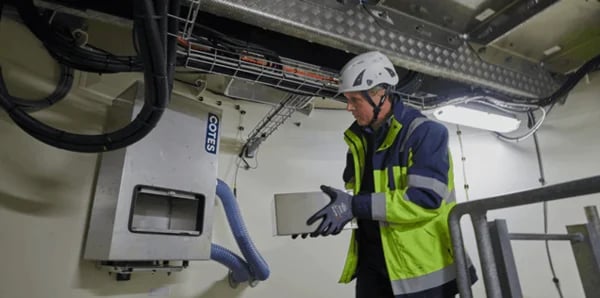 Keld Selchow Bonnez, Cotes Senior Design Engineer, retrofits a Cotes dehumidifier
Keld Selchow Bonnez, Cotes Senior Design Engineer, retrofits a Cotes dehumidifier
Get a Cotes dry-air solution recommendation
To create a robust dehumidification solution in you offshore turbines, the climatic conditions at sea must be given serious consideration. Otherwise, mould issues, that are expensive to resolve, are likely to occur. Likewise, condensation leading to corrosion, and electrical failures can be expected.
Could you benefit from consultation about the best dry-air strategy for your wind turbines? Our team of experts is here to help.
